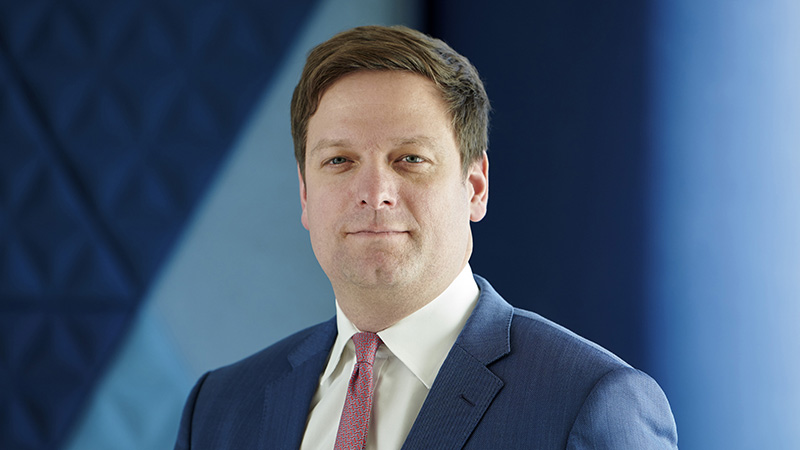After a strong year of performance in 2023, rising bankruptcies and thinner credit spreads have left investors understandably cautious on high-yield bonds. More than £85m left the sector in January, according to the Investment Association. However, the all-in yield for high-yield bonds still looks appealing, with yields of 7-8% not uncommon for funds in this part of the market. Mike Scott (pictured), manager of the Man GLG High Yield Opportunities fund, believes there are ways to harness this yield while swerving the growing credit risk in the asset class.
“There are times when having pure high-yield beta is a no-brainer,” he says. “That’s not the case today. Given the range of outcomes, we are cautious about owning the market from here. We want exposure to situations that are less correlated.”
The strategy of the Man GLG High Yield Opportunities fund is to be benchmark agnostic, looking across the spectrum of sub-investment-grade debt. Scott’s approach is to be active through the credit cycle, on the premise that the environment businesses find themselves in will change over time. This, he says, is a better way to reflect the real risks and opportunities in the sector, rather than basing a strategy around backward-looking measures such as credit ratings.
“The future is always a little fuzzy, so we need to analyse a range of outcomes and try to understand what we’re getting paid for the amount of risk we’re taking. The way we do that is to analyse businesses, looking at their forecasts, company cashflows and balance sheet strength. We also spend a lot of time with management teams to try and understand their motivation and how much risk they’re willing to take.”
See also: Are high yield investors in for a bumpy ride?
He says this approach allows for the intricacies and complexities of a business far more than grouping them by rating blocks, sectors or countries. “First and foremost, it’s about risk and return, and whether we’re being appropriately compensated with a significant margin of safety for the credit risk we take.”
This means an oil and gas company could look very good value at one point in the market cycle and a terrible investment at another. “Valuations are constantly changing and different businesses will be performing at different points in the cycle, and will be exposed to different risks at different points in the cycle,” says Scott.
“We look at valuations today, and the environment in which a company is operating. We try to assess whether that is risk we want to take. We like cash-generative stable companies backed by hard assets, which are trading at discounts to the market.”
This has seen the fund deliver in a range of market conditions. In the five calendar years since its inception, it has produced positive performance in four out of five: 15.7% in 2020, 10.9% in 2021, 10.6% in 2023 and 2.4% for the year to date in 2024.
In 2022, it was down 9.8%, but this was still ahead of the wider market. Cumulatively, the fund is up 9.3% over three years, almost double the return of the wider sector. The fund currently has a running yield of 7.5%.
Read the rest of this article in the April issue of Portfolio Adviser magazine






